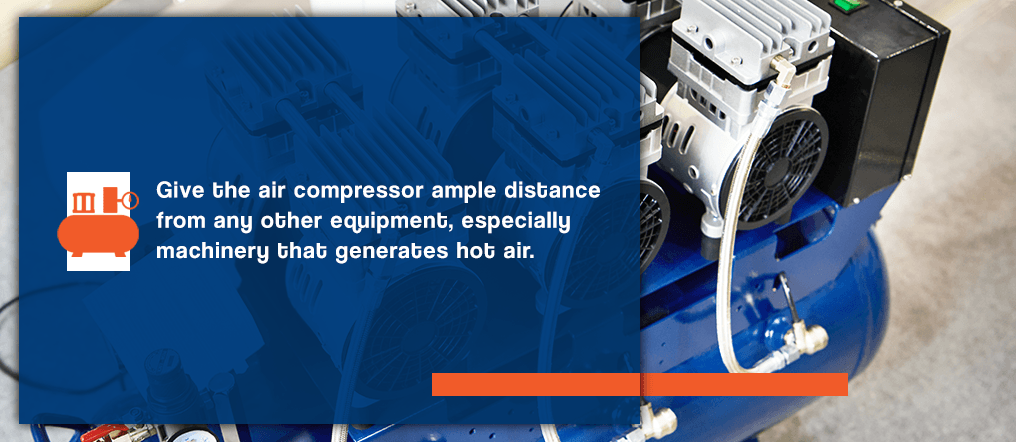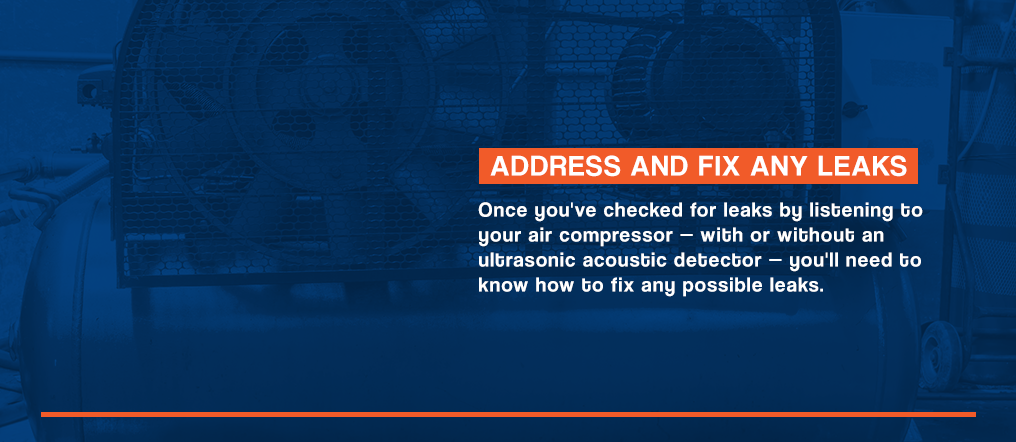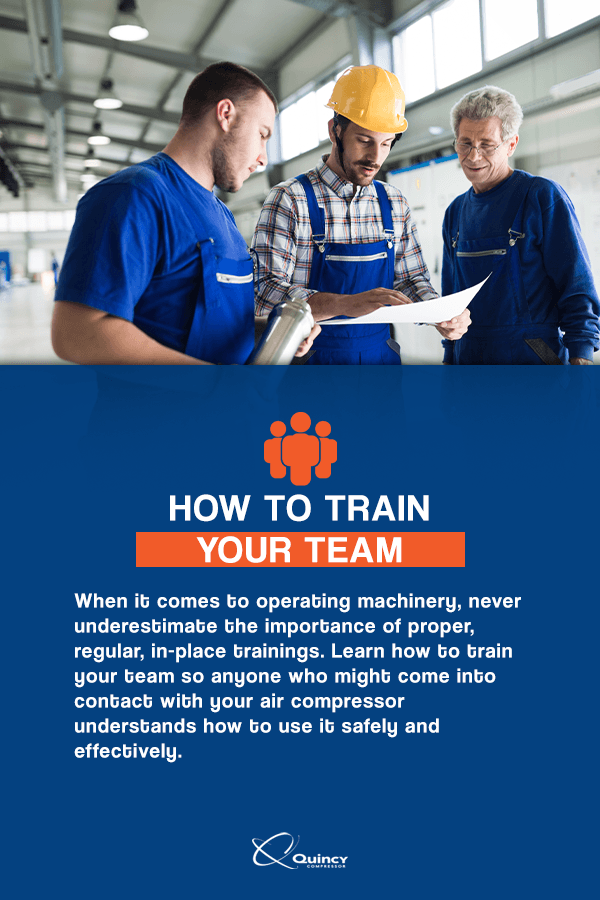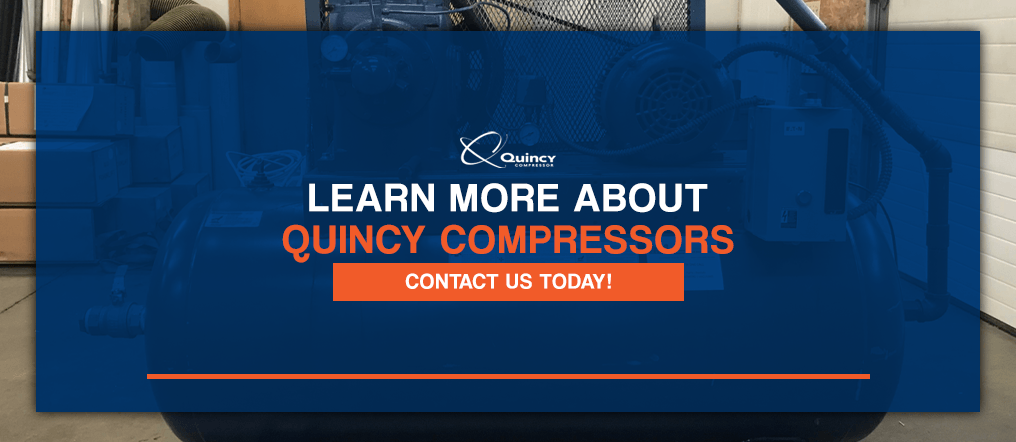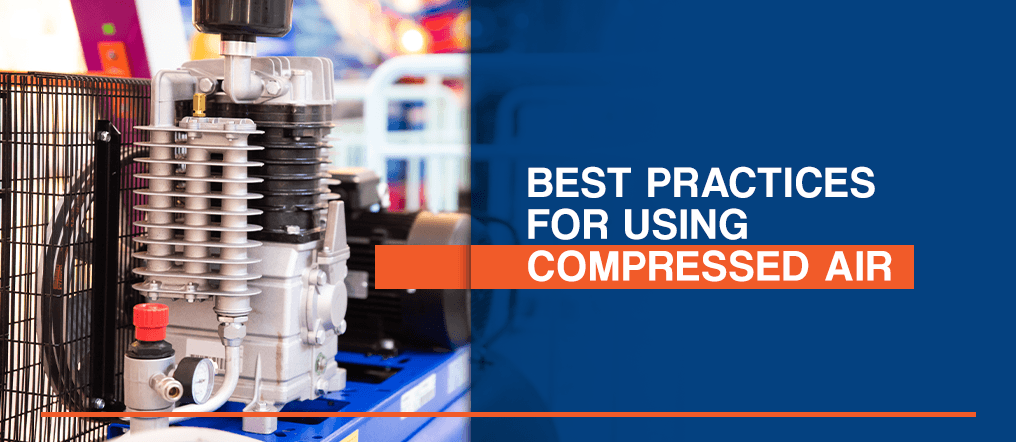
It’s important to follow industry standards for handling air compressors, both for safety reasons and for the sake of optimizing operating costs. Understand how your air compressor works so you can identify any issues and minimize expenses. Evaluate your compressed air needs and use automatic settings, and only use compressed air for its intended purposes to prioritize your team members’ well-being and safety. Make sure everyone on your team understands the operational costs and safety standards associated with using compressed air.
You should fully comprehend your compressed air system — how it’s laid out, what applications it has and when and how to use it effectively. Perform regular preventative maintenance to decrease expenses associated with running it. Below, you’ll learn more about how to enhance your compressed air system’s productivity, reliability and safety.
Working With Compressed Air: How to Use Your Air Compressors Correctly
Learn to implement the best practices for air compressor systems by ensuring worker safety and reducing your operating expenses as much as possible. Which air compressor you choose, how it’s installed and how you use it will determine its effectiveness. For more details on which best practices to follow, keep reading:
1. Purchase the Best Air Compressor for Your Application
Make sure you choose an air compressor well-suited to your needs. Browse various air compressor options and their applications. Different compressor systems are best-suited to various environments. For instance, oil-free scroll compressors are best for pharmaceutical and food manufacturing environments, as they decrease air contamination. Reciprocating piston compressors are best for mechanic and construction industries. For the most heavy-duty applications, a rotary screw compressor is usually a fitting choice.
Think about what your air compressor needs are and which features are most important to you. Educate yourself on different air compressor models and speak with a local expert to seek advice. When it comes to optimizing your use of compressed air, the first step is to make a wise purchase. Make sure you consider what your compressed air needs are and which type of air compressor will best serve those demands.
Ask yourself if your air compressor needs to be oil-free. This means the pistons have a Teflon coating rather than oil lubrication. Oil-free compressors have many benefits — they’re better for the environment, they provide cleaner air and they tend to require less maintenance. When purchasing your air compressor, you can decide between oil-injected or oil-free models.
2. Ensure Proper Installation of Your Air Compressor
Where and how your air compressor is installed will make a huge difference in its operating costs and safe functioning. If you’re wondering how to protect your air compressor from damage, learn about proper placement and installation.
For optimized function, an air compressor needs a consistent stream of cool, dry and clean air. Make sure airflow into the compressor is unrestricted and free from any impurities, with plenty of ventilation. Give the air compressor ample distance from any other equipment, especially machinery that generates hot air. If situated poorly, an air compressor can become a hazard and damage itself as it tries to work.
You should place your air compressor as close to where you need to use it as possible. The further compressed air has to travel, the less efficient it’ll be and the more opportunity there will be for leakage. Be sure to attach a filter and link the compressor to both an air dryer and oil and water separator.
When choosing a placement, also consider noise levels. Since the machine can be noisy as it operates, try to place it somewhere it’ll be least disruptive. If you place your air compressor outside, make sure it’s protected from both water and dirt.
3. Measure Your Compressed Air Needs
Various industries have different applications for compressed air. Evaluate your needs to determine the most effective operational setup. Keep a log of when you use compressed air and how much pressure your demands require. Once you’ve compiled some data, check for peaks and lows. Determine when your need for compressed air is at a high or if there are times when compressed air is unnecessary.
One of the most important ways to decrease operating costs is to turn off the air supply when your compressor is not operating. You’ll want to utilize the system’s storage and automatic controls to your advantage. If your compressed air machine lacks automatic controls — very old models may not have this option — consider upgrading your model. Automatic controls will help you save on operating expenses.
Additionally, you should always use the minimum number of air compressors needed to meet your demand at a given time. Unless your application requires a constant stream of compressed air, shut the supply off when it’s not needed.
Another area of lost efficiency occurs with the pressure level. Be sure to use the lowest practical pressure level for any given application. Excess pressure will increase your expenses, as more pressure requires more power. Using a minimum amount of pressure will decrease both power consumption and the risk of leaks.
4. Understand the Cost of Operation
Compressed air is not free — the purchase price of a compressed air machine is only the initial cost. You need to make sure you understand the operating costs of using compressed air if you hope to employ it productively. In an industrial plant, a compressed air system can account for as much as 30% of your total electric bill, which can be hundreds of thousands of dollars.
Effective use means only applying the necessary level of pressure and turning the airflow off when not using the machine, but it also means understanding compressed air leaks. Leaks result in a huge amount of waste. Generating compressed air takes a lot of power input. You’ll want to use all the compressed air your machine generates and avoid allowing any of it to go to waste through leaks.
Air leaks are an expensive waste of power, but they can also harm an entire industrial operation. Over time, air leaks can slow or even shut down production. They can contribute to system pressure drops, shortening the life span of other equipment. Air leaks force an air compressor to work harder and longer, eating up power and resulting in less efficient operation.
It’s important to understand the operating costs of using compressed air so you can identify and address gaps in efficiency. This is especially true for solving leaks in your compressed air system.
5. Know Where and How to Check for Leaks
To optimize your air compressor, you need to be able to identify any possible leaks. Check for leaks in all these operational points:
- Overhead distribution
- Ground-level air hoses
- Hose connections or fittings
- Quick couplers
- Drains
- Filters
- Regulators
- Line lubricators
Several factors can contribute to leaks. If seals, fittings or connections are loose, there will likely be leaks. If other machines or workers bump into the air compressor, they may damage pipes or fittings and cause leaks. Similarly, operator error can result in a leak problem. For instance, someone may forget to close a valve or shut off the machine after use.
The simplest way to identify a leak is to listen for a hissing sound while the air compressor is in operation. If your air compressor is located in a noisy location, such as a factory, you can use an ultrasonic acoustic detector. These tools filter out any background noise and recognize high-frequency hissing sounds that an untrained ear might miss. The tool will alert you of possible leaks either on a visual screen or through connected earphones.
6. Address and Fix Any Leaks
Once you’ve checked for leaks by listening to your air compressor — with or without an ultrasonic acoustic detector — you’ll need to know how to fix any possible leaks. Air does not need much space to escape, and compressed air will exit the system rapidly.
Address leaks by closing off points of escape. This includes loose fittings and connections through which air can travel. This is the primary cause of most leaks. Make sure to tighten any fittings, couplers, valves and other connection points. In addition to loose fittings, another cause of leaks can be small holes in hoses or pipes. You may need to replace elements of your machinery that compressed air travels through. Even the tiniest holes can result in massive amounts of lost air.
Because you might not be able to see where exactly air leaks are coming from, you should upgrade your air compressor system’s components at regular intervals. Replace older hoses and pipes that might have sustained damage and tighten any fittings often, as they may loosen over time.
Create a schedule for when you will check for leaks in your air compressor — you should aim to do this often. Educate everyone on your team about how to identify and avoid leaks.
7. Use Compressed Air Only for Its Intended Purposes
Using compressed air for unnecessary purposes will waste power and increase operating costs, but it can also result in serious injury or death. Compressed air is powerful. At only 2 pounds-force per square inch (psi), you can propel a spitball through a straw up to several yards. Imagine the damage an air compressor operating at 60 to 100 psi can do.
If compressed air enters the body through the mouth or elsewhere, it can rupture organs. If it enters the bloodstream, it can cause a heart attack or stroke. Debris propelled by compressed air can cause severe injury, especially to the eyes and ears. This can lead to blindness or deafness.
To ensure harm-free operation, educate yourself and your team on air compressor safety. Only ever use the machine for its intended purposes. Never used compressed air to clean away debris from a work area or off of clothing. Provide protective gear to anyone working within proximity of an air compressor, and enforce the use of this gear.
An air compressor is not a toy — always prioritize caution. In addition to only using the machine for its intended purposes, evaluate any possible hazards. Make sure outlets are grounded correctly, dangerous fumes release away from workers and compressors have access to clean, dry, cool air.
8. Schedule Regular and Preventative Maintenance
Scheduling preventative maintenance will help you avoid emergency repairs and unexpected downtime. It’ll help you optimize your air compressor’s performance, lengthening its life span and decreasing operating costs. At fixed, scheduled intervals, you should perform the following tasks:
- Clean the air filter: Your compressor’s air filter eliminates impurities, so it’s important to keep it clean.
- Check and replace oil filters: Oil buildup will damage compressed air, so be sure to replace heavily coated oil filters.
- Reapply fresh lubricant: A lack of fresh lubrication will result in corrosion, damaging the machine and its parts.
- Grease motor bearings: Rust on motor bearings can lead to motor failure.
- Adjust belt tension and replace old belts: A worn belt may snap during operation, which can cause serious damage.
- Clean intake vents: Reliably clean input air will make the air compressor’s job much easier.
- Check performance levels of all parts: Check everything, including oil level, temperature, voltage and vibration.
Without consistent preventative maintenance, an air compressor’s productivity will decrease. In extreme instances, a lack of maintenance can pose a serious threat, as an unserviced air compressor can catch fire or explode. For these reasons, it’s important to follow a schedule for cleaning and replacing elements of your air compressor.
How to Train Your Team
When it comes to operating machinery, never underestimate the importance of proper, regular, in-place trainings. Learn how to train your team so anyone who might come into contact with your air compressor understands how to use it safely and effectively.
Teach your team about the equipment’s operating costs, and make sure everyone knows how to recognize the hissing sound associated with air leaks. Review appropriate and inappropriate uses of compressed air and enforce standards for when and how to use it. Make sure everyone who will be using the air compressor knows how to check the equipment before employing it.
Be sure to provide all necessary protective gear and make it mandatory to wear, including eye and ear protection. Explain the dangers of not wearing this gear so everyone understands the stakes. There are plenty of real-life examples of injuries caused by misuse of compressed air — describe the risk of harm associated with not wearing appropriate personal protective equipment (PPE).
You can use premade training videos to supplement your in-place training. Videos will provide visuals to illustrate key points, but be sure to engage in a conversation with your team before and after showing a video.
After initial training, use posters and checklists to serve as daily reminders. Revisit training materials at pre-planned times to keep the information fresh in your team members’ minds.
Learn More About Quincy Compressors
Compressed air has endless uses and applies to many different industries. Despite the widespread application of compressed air, many are unaware of how to use it safely and effectively. It’s important to choose the proper air compressor for your needs, understand its operating costs and establish and enforce safety standards.
When used safely and efficiently, an air compressor can be one of the most valuable pieces of equipment in your entire operation. To learn more about the applications, operational expenses and safety concerns related to air compressors, contact Quincy Compressor today.


